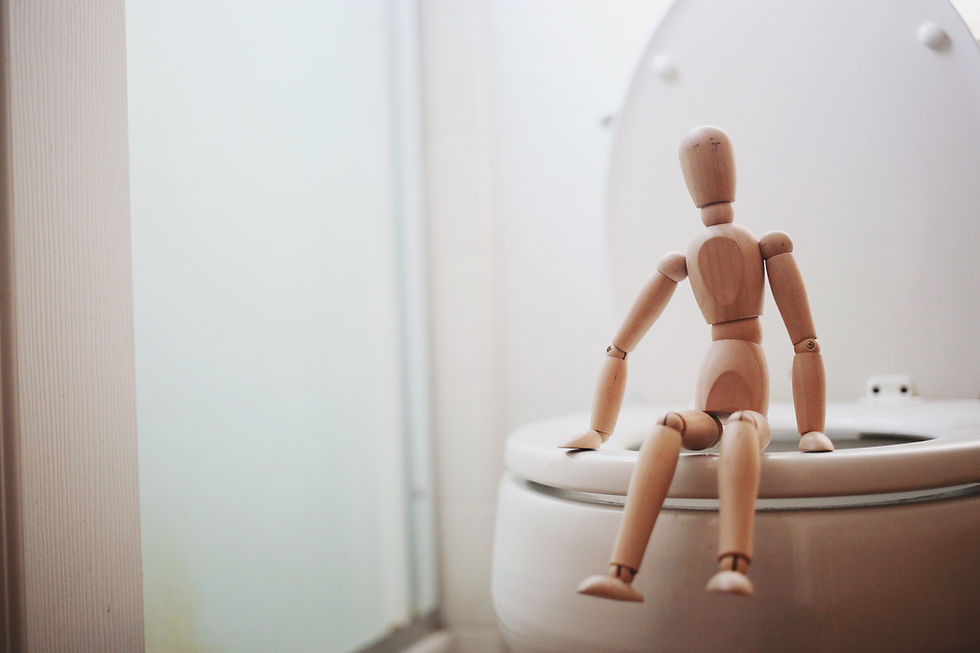IBS Awareness Month
- Holly Arnold

- Mar 25, 2023
- 2 min read
Poo, stools, shit, crap….

Regardless of what you call it, poo is a bit of a taboo topic, but whether we like it or not, our poo is an important indicator of our health and is such an under-utilised tool that provides insight into what is happening in our digestive systems.
So if you don’t take a peek in the toilet bowl from time to time, it’s time to start
What you’re aiming for is a Bristol Stool Chart Type 4 (the gold standard of poo’s - well-formed, smooth, sausage/snake-like) that is brown in colour, easy to pass and you are on a pretty set ‘poo clock’ in the sense that you get a regular urge to go and feel fully evacuated after you go.
Now I’d just like to say that most of us have at some stage experienced a bout of diarrhoea, constipation or poo that’s a bit of a funky colour, and that’s totally normal. But if it’s an ongoing issue that’s happening alongside other symptoms (bloating, excessive gas, cramps etc) that’s when it deserves further investigation.
Here are the key areas to consider when monitoring your poo, or describing it to a healthcare practitioner:
💩 Type/Consistency - this is where the Bristol stool chart comes in and helps you rank and describe your poo on a scale from constipated right through to diarrhoea. If you experience a variety of ‘types’ consider the variety and how often you experience each type
💩 Colour - the colour of your stools can also tell us a lot about what your digestive system is doing. Brown is what we are aiming for, and colours to look out for that could indicate things need investigation are black, red, orange, yellow, green or white
💩 Frequency - how often you are going the bathroom to do a poo. Now this will vary from person to person, with the medical ‘normal’ being stated as anywhere from 3x per day to 3x per week
💩 Extras - anything extra you notice such as pain when passing a poo, mucus, undigested food or blood





Comments